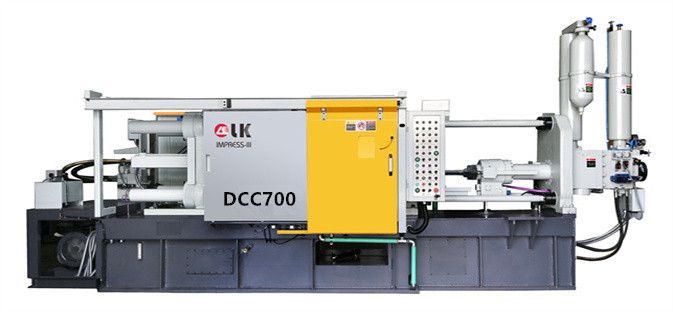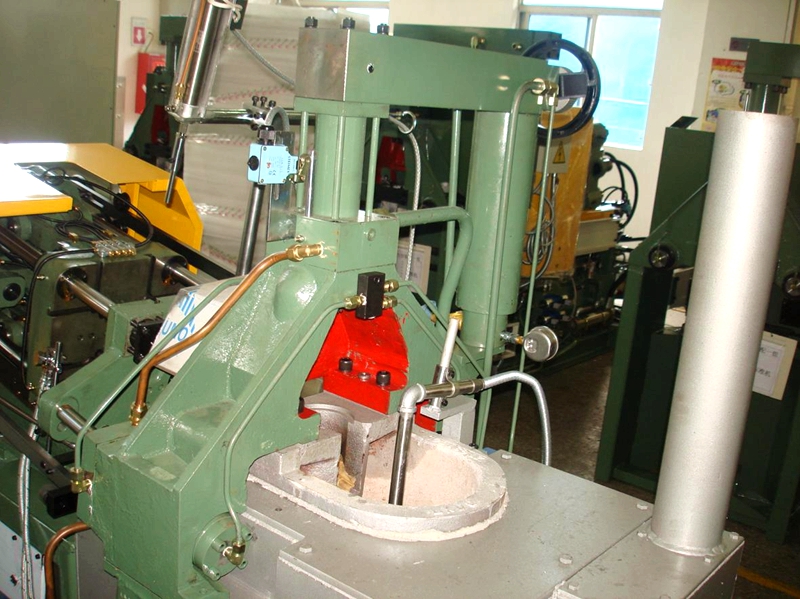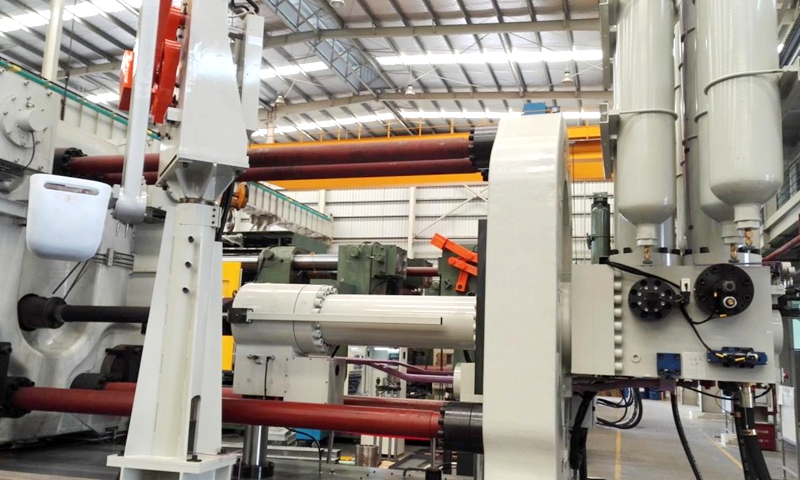Hot and Cold Chamber Die Casting Difference
LK Die Casting Machine / 2024-10-28 09:39:24
Die casting is a common and important process in the foundry industry. There are hot chamber die casting and cold chamber die casting, which have significant differences in equipment, process, and application.

This article will discuss the differences between hot chamber die casting and cold chamber die casting in detail. Understanding these differences can help us better choose the appropriate die-casting method and improve production efficiency and product quality.
Hot Chamber Die Casting
Hot chamber die casting, as the name implies, is a die-casting process performed in a high-temperature environment. The cast metal alloy melting furnace of the hot chamber die-casting machine is directly connected to the die-casting machine's injection chamber so that the molten metal can be quickly injected into the mold through the "gooseneck". Hot chamber die casting is suitable for metals with low melting points such as zinc, Magnesium, aluminum, and their alloys.

(The injection chamber is always immersed in the molten metal in the furnace, always maintaining a high temperature)
Features and advantages:
Fast production cycle: Hot chamber die casting has a faster production speed because the molten metal is injected directly from the furnace into the mold.
High efficiency: Due to the compact system and less energy loss, hot chamber die casting is generally energy-efficient.
Strong applicability: Suitable for the production of large quantities of small and complex parts, such as bathroom accessories, locks, lighting, etc.
Cold Chamber Die-casting
Cold chamber die casting is a die-casting process performed at room temperature. The metal furnace of the cold chamber die-casting machine is separated from the die-casting machine. The molten metal is injected into the injection chamber by manual or mechanical means and then injected into the mold by the injection system. Cold chamber die casting is suitable for high melting point metals such as aluminum Alloy and copper alloy.

(The injection chamber is separated from the furnace and exposed to the outside.)
Features and advantages:
High efficiency and energy saving: Compared with hot chamber die casting machines, cold chamber die casting machines have lower casting temperatures, usually between 600-700°C, which helps reduce metal oxidation and energy consumption.
Wide range of applicable materials: Mainly suitable for aluminum, magnesium, zinc, and other alloy materials, especially suitable for aluminum alloy casting, which can effectively improve the quality of castings.
Suitable for small batch diversified production: Since it is easier to change molds during the casting process, cold chamber die casting machines are more suitable for small batch and multi-variety production needs.
Application areas
Hot chamber die casting applications:
Lightweight parts: let us trace the die-cast automotive industry, such as automotive accessories, and electronic equipment housings, which are suitable for industries pursuing lightweight design.
Zinc alloy products: such as locks, toys, and decorations, zinc can prevent rust, and zinc alloy is rust proof.
Cold chamber die casting applications:
High-strength parts: such as automobile engines Machine parts, and aviation parts (A380 aluminum alloy has excellent strength and corrosion resistance).
Large structural parts: such as building and industrial equipment parts, "aluminum and aluminum" alloy structural parts are suitable for occasions requiring high strength and durability.
Summary
Choosing hot chamber die casting or cold chamber die casting depends on product requirements and material properties. In comparison, hot chamber die casting is suitable for the rapid production of small and complex parts, while cold chamber die casting is suitable for high-strength large structural parts. But they can both complete mechanical manufacturing work at high speed and precision, improve efficiency, and reduce loss costs.
Understanding the difference between these two die-casting processes can help companies make the best choice for production and improve production efficiency and product quality.
To learn more info about Die Casting Machines, pls contact:
LK OFFICIAL AGENT OFFICE DCM
LK Official Agent for Egypt(EGY), Saudi Arabia(KSA),United Arab Emirates(UAE),
the Islamic Republic of Iran(Iran), Qatar(QAT), the State of Kuwait(Kuwait)
Address: Industry Zone, South of Port Said Kebly, Egypt
https://www.zazdiecasting.com/
Phone/WhatsApp/Wechat: +86 13598704163
Mobile: +20 101 304 3317 +20 150 181 8310
Email: jack@zazmae.com ahmedmahmoud@zazmae.com
OTHER CONTENT
-

2024-09-19 14:16:15 LK Cold Chamber Die Casting Machine DCC900 Locking Force: 9000KN Die Height: 400-1000mm Space Between Tie Bars: 930x930mm Shot Weight: 13.5Kg Casting Area Max:2250c㎡
More -

2024-09-19 14:11:06 LK Cold Chamber Die Casting Machine DCC280 Locking Force: 2800KN Die Height: 250-650mm Space Between Tie Bars: 560x560mm Shot Weight: 2.9Kg Casting Area Max:700c㎡
More -

2024-09-19 10:23:07 LK Cold Chamber Die Casting Machine DCC580 Locking Force: 5000KN Die Heigh: 350-850mm Space Between Tie Bars: 760x760mm Shot Weight: 6.9Kg Casting Area Max:1250c㎡
More -

2024-09-19 10:11:20 LK Cold Chamber Die Casting Machine DCC400 Locking Force: 4000KN Die Height: 300-700mm Space Between Tie Bars: 669x669mm Shot Weight: 4.7Kg Casting Area Max:1000c㎡
More

